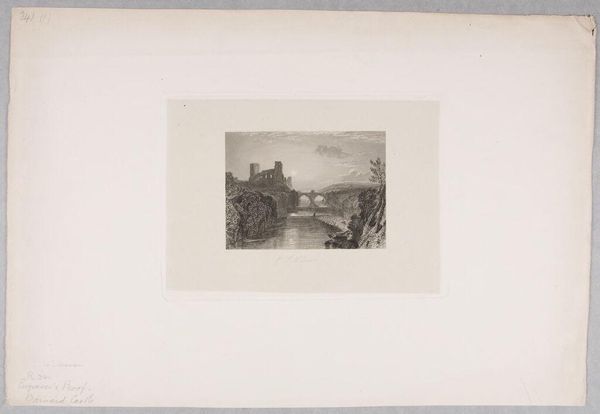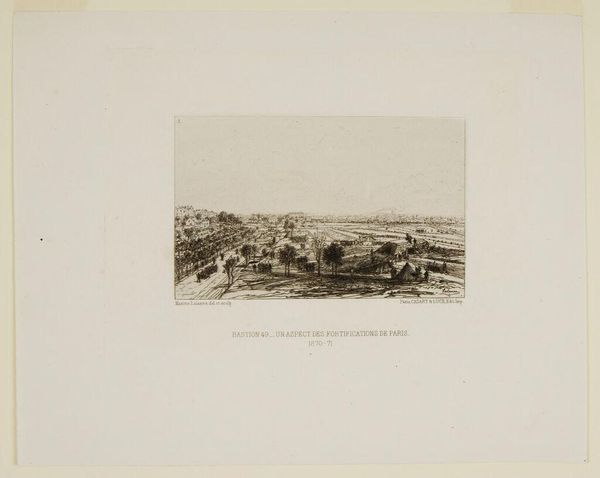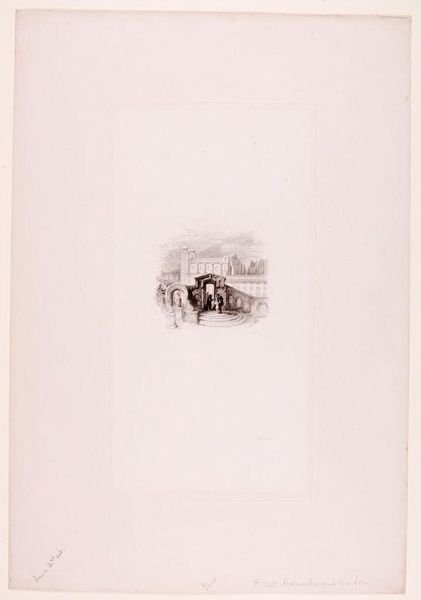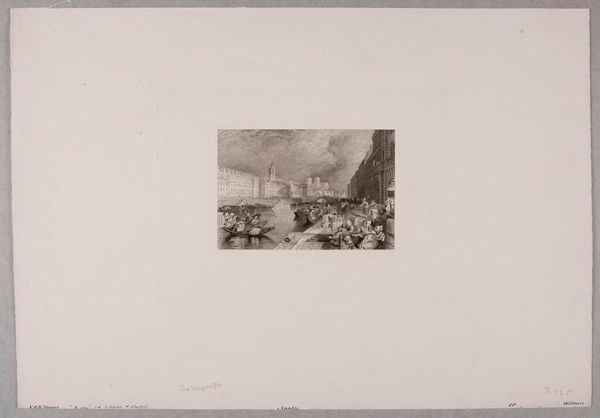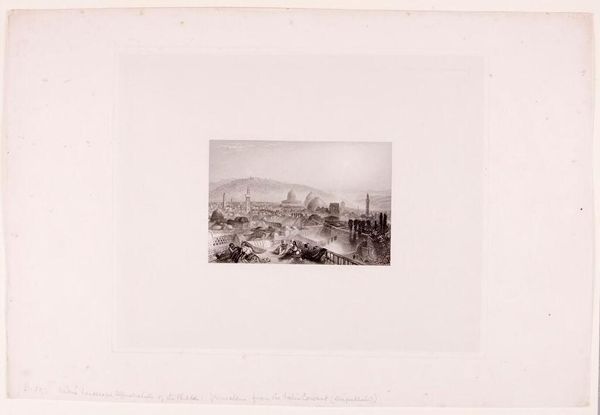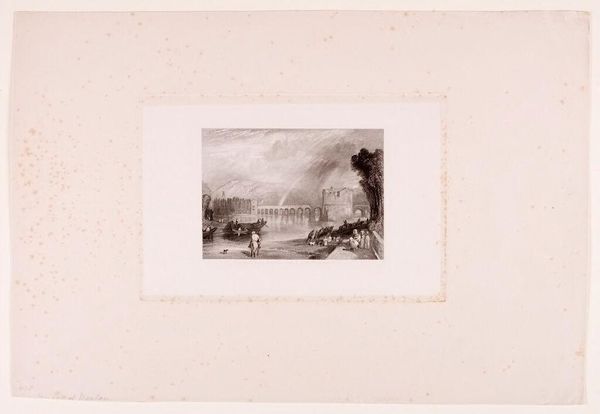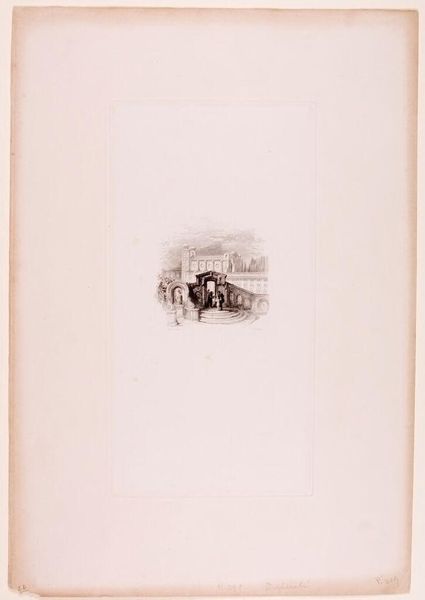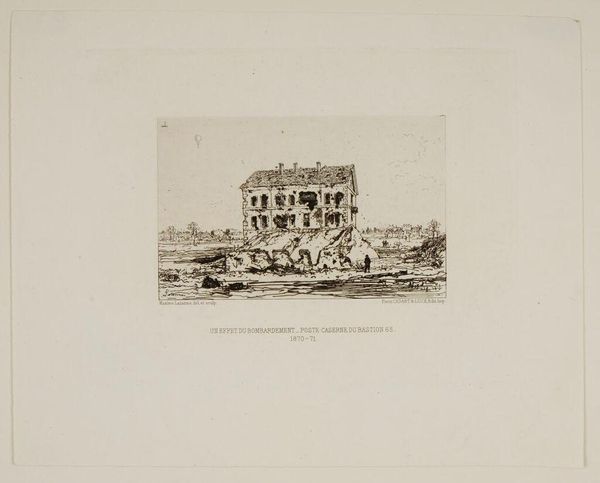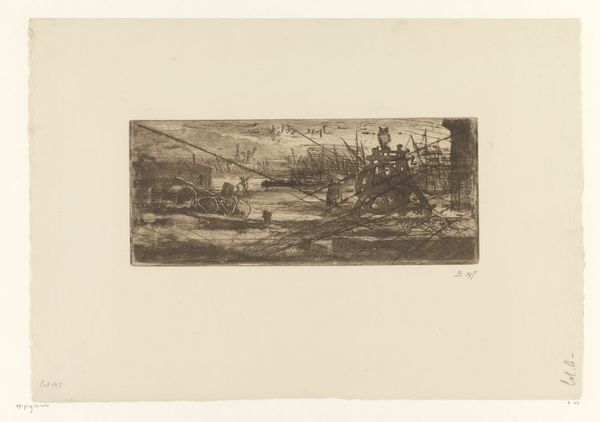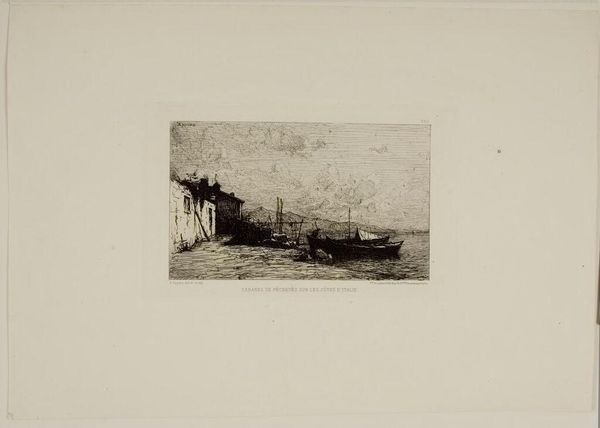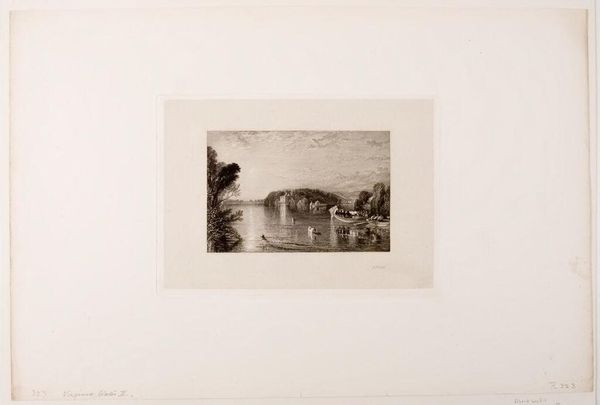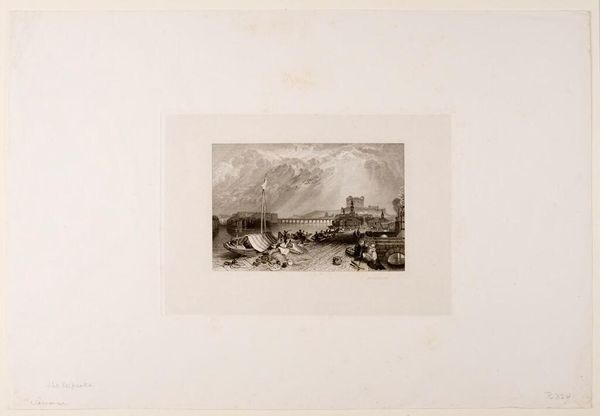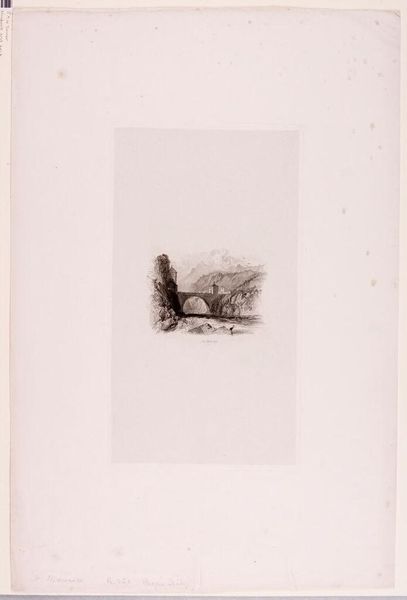
Copyright: CC0 1.0
Curator: This is Alfred Louis Brunet-Debaines' "To Verdun by the Doubs," currently held here at the Harvard Art Museums. Editor: It's so delicate! The etching has a wonderful stillness, a quietude evoked by the reflection of the buildings on the water. Curator: Brunet-Debaines was a prominent etcher of architectural scenes, particularly influenced by the French landscape tradition. His work offers insight into the late 19th-century urbanization and the changing social landscape. Editor: Notice how the artist uses line to define form. See how the bridge and its reflection create a perfect circle, anchoring the composition? Curator: The scene presents an idyllic, almost idealized view of Verdun. But that belies the reality; places like Verdun were undergoing significant transformation during Brunet-Debaines' lifetime due to industrialization and urbanization. Editor: The values, too! The subtle gradations of light and shadow suggest a quiet, overcast day. The composition is incredibly stable, almost classical in its balance. Curator: Yes, it is a fascinating glimpse into the past, and Brunet-Debaines' skill gives us a way into considering larger social changes. Editor: It's a remarkably serene and self-contained world, isn’t it?
Comments
No comments
Be the first to comment and join the conversation on the ultimate creative platform.
